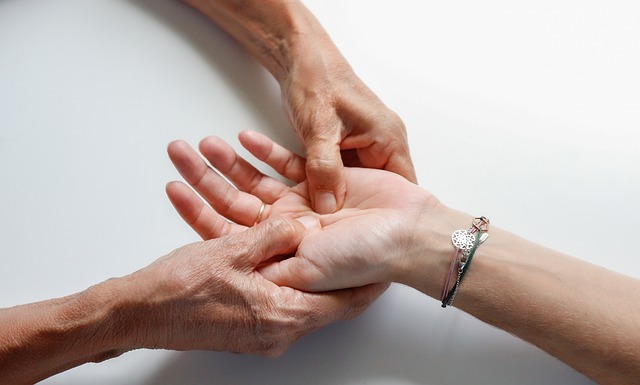Post-Traumatic Stress Disorder (PTSD) is a serious mental health condition triggered by trauma, causing symptoms like flashbacks and severe anxiety. Recognizing these impacts is vital for seeking effective PTSD treatment. Therapeutic approaches, including Cognitive Behavioral Therapy (CBT), Eye Movement Desensitization and Reprocessing (EMDR), and Prolonged Exposure (PE) therapy, help individuals manage traumatic memories and emotions. These treatments, coupled with alternative therapies like yoga and art, offer hope and improved well-being for PTSD sufferers. Self-care strategies such as exercise, mindfulness, and connecting with support networks are crucial for long-term symptom management.
Post-Traumatic Stress Disorder (PTSD) is a profound mental health condition impacting individuals who have experienced traumatic events. This article delves into comprehensive PTSD symptom management therapy, offering insights on understanding and coping with its devastating effects. We explore traditional approaches like Cognitive Behavioral Therapy (CBT) and Exposure Therapy, as well as innovative techniques such as Eye Movement Desensitization and Reprocessing (EMDR). Additionally, alternative therapies including yoga, art, and music are examined for their complementary roles in healing. Self-care strategies are also highlighted to foster resilience and long-term PTSD treatment.
Understanding PTSD and Its Impact on Mental Health

Post-Traumatic Stress Disorder (PTSD) is a mental health condition that can develop after an individual experiences or witnesses a traumatic event. It’s more than just feeling scared or anxious; PTSD can significantly impact daily functioning and overall well-being. The symptoms, which often include flashbacks, nightmares, and severe anxiety, can be overwhelming and persist for extended periods, affecting relationships, work, and personal life.
Understanding the nature of PTSD is crucial in recognizing its impact on mental health. This awareness encourages individuals to seek PTSD treatment, which offers valuable tools for managing symptoms. Through various therapeutic approaches, such as cognitive-behavioural therapy (CBT) or eye movement desensitization and reprocessing (EMDR), individuals can learn coping strategies to navigate their traumatic memories and emotions more effectively.
Common Symptoms of Post-Traumatic Stress Disorder (PTSD)

Post-Traumatic Stress Disorder (PTSD) is a complex condition that can significantly impact an individual’s daily life and well-being. Recognizing the common symptoms is a crucial step in understanding PTSD and seeking effective treatment. Some of the prevalent signs include intrusive memories or flashbacks, where individuals relive traumatic events as if they were happening again. These experiences can be triggered by reminders in their environment or certain thoughts and feelings.
Another significant symptom is avoidance, where people with PTSD might try to distance themselves from situations, places, or people that evoke a sense of danger or remind them of the trauma. They may also exhibit heightened arousal, experiencing intense emotions like anxiety, fear, or anger easily, and having trouble sleeping and focusing. These symptoms often lead individuals to seek PTSD treatment, which can include various therapeutic approaches tailored to their unique needs.
Traditional Therapy Approaches for PTSD Management

Traditional therapy approaches for PTSD management often involve a combination of psychological treatments, such as Cognitive Behavioral Therapy (CBT) and Eye Movement Desensitization and Reprocessing (EMDR). CBT helps individuals identify and challenge negative thought patterns associated with traumatic events, while EMDR facilitates the processing of repressed memories and emotions. These therapeutic methods aim to reduce symptoms like flashbacks, nightmares, and avoidance behaviors by helping patients develop coping strategies and enhance their overall resilience.
Additionally, other evidence-based practices like Prolonged Exposure (PE) therapy encourage individuals to confront traumatic memories in a safe environment, gradually reducing anxiety and fear responses. Group therapy sessions also play a significant role, providing a supportive network where PTSD sufferers can share experiences, gain insights from peers, and learn effective coping mechanisms. These traditional approaches have shown promising results in alleviating PTSD symptoms, offering much-needed relief to those struggling with this condition.
Cognitive Behavioral Therapy (CBT): A Focused Approach

Cognitive Behavioral Therapy (CBT) is a structured and goal-oriented approach within PTSD treatment, focusing on identifying and changing negative thought patterns and behaviors. By challenging unhelpful cognitions and replacing them with healthier alternatives, CBT aids individuals in managing their symptoms effectively. This therapy involves learning coping strategies to deal with traumatic memories, reducing avoidance behaviors, and improving emotional regulation.
Through CBT, patients acquire tools to reframe negative perspectives, enhance problem-solving skills, and develop more adaptive responses to stressful situations. The focused nature of this treatment enables individuals to gain a deeper understanding of their trauma’s impact and learn to process and integrate these experiences in a healthier manner.
Exposure Therapy: Confronting Fears to Gain Control

Exposure therapy is a powerful tool in the arsenal of PTSD treatment, offering individuals a way to regain control over their lives by confronting fears head-on. This therapeutic approach involves gradually and safely exposing patients to traumatic memories or situations they fear, helping them process these experiences and reduce the intensity of their responses. By facing their anxieties, individuals with PTSD can learn to manage their symptoms and gain a sense of mastery over their emotions and behaviors.
Through carefully structured sessions, therapists guide clients through imagined or real-life scenarios related to their trauma. This process allows them to process and reinterpret these experiences in a safe environment, reducing the overwhelming fear and avoidance that often characterize PTSD. As patients become more comfortable facing their fears, they develop effective coping strategies and learn to regulate their emotional reactions, leading to improved overall well-being.
Eye Movement Desensitization and Reprocessing (EMDR): Unlocking Healing

Eye Movement Desensitization and Reprocessing (EMDR) is a groundbreaking therapy for PTSD treatment, offering a unique approach to help individuals process traumatic memories. This innovative method involves guiding patients through a series of eye movements while they focus on distressing events. The gentle bilateral stimulation, often in the form of side-to-side eye movements or other rhythmic signals, facilitates the brain’s natural healing process. By reprocessing these traumatic memories, EMDR helps reduce their intensity and associated symptoms.
During an EMDR session, patients recall the traumatic event while simultaneously engaging in the eye movements. This simultaneous focus allows the mind to reprocess the memory, reducing its emotional impact. As a result, individuals with PTSD can begin to heal from deep-seated trauma, experiencing reduced flashbacks, nightmares, and anxiety related to their past experiences. EMDR has gained recognition as an effective therapy for PTSD treatment, providing hope and improved quality of life for those affected by traumatic events.
Alternative Therapies: Yoga, Art, and Music as Complementary Tools

Alternative therapies like yoga, art, and music have emerged as powerful complementary tools in PTSD treatment. Yoga combines physical postures with breathing techniques and mindfulness, helping individuals manage stress, anxiety, and depression, common symptoms of PTSD. The slow, controlled movements facilitate relaxation, while mindful breathing promotes a sense of calm and present-moment awareness, which can be challenging for those struggling with intrusive thoughts and flashbacks.
Art therapy provides a non-verbal outlet for expression, allowing individuals to process and externalize their emotions. Creating art can serve as a form of self-soothing and promote feelings of control and empowerment. Similarly, music therapy has proven effective in reducing PTSD symptoms by engaging the brain’s reward system through listening, playing, or creating music. Whether it’s through painting, sculpting, or writing music, artistic expression offers a safe space for exploration and healing.
Building Resilience: Self-Care Strategies for Long-Term Management

Building resilience is a key aspect of long-term symptom management for those dealing with Post-Traumatic Stress Disorder (PTSD). Self-care strategies play a vital role in empowering individuals to navigate their journey towards healing. By adopting certain practices, individuals can enhance their ability to cope with traumatic memories and emotions effectively.
This involves prioritizing mental well-being through regular exercise, mindfulness techniques, and maintaining a consistent sleep routine. Engaging in activities that foster relaxation and stress reduction, such as yoga or deep breathing exercises, can help regulate the nervous system and create a sense of calm. Additionally, setting boundaries, practicing self-compassion, and seeking support from understanding friends or therapy groups contribute to building a resilient mindset, enabling better management of PTSD symptoms over time.
